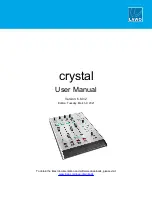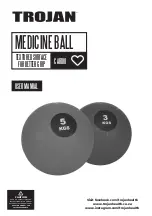
24
25
7. Functional description / operating information
Please take the time to carefully read through this Owner’s
Manual to ensure that you are familiar with all of the
functions of your Ex-DT 12 and know how to use all of the
functions.
For your own safety and information please read through
the information on the following pages.
7.1 getting started
Run a function test each time you use the device in the
ex-area. To do this, short circuit both test probes. You will
hear the so-called short circuit signal and the LEDs in the
test head illuminate.
If the short circuit signal is loud and clear, the battery
power is adequate. If this is not the case when new bat-
teries are fitted, send the device back to the factory for
checking.
Batteries are factory-fitted.
7.2 replacing the batteries
Run a function test each time you use the device. To do
this, short circuit both test probes. You will hear the so-
called short circuit signal and the LEDs in the test head
illuminate.
If the short circuit signal is loud and clear, the battery
power is adequate. If this is not the case, the batteries
need replacing. It is advisable to replace both batteries at
the same time.
Only approved batteries may be used (see Table listing
type-approved batteries under Item 6. Technical Data).
Before the batteries can be replaced, remove the securing
screw using a suitable screw driver. The grip sleeve of the
continuity tester can now be pulled backwards and the
batteries removed. Ensure correct polarity when inserting
new batteries.
The contacts of the new batteries and the holders should
be cleaned before fitting. Once the batteries have been
replaced, slide the grip sleeve back onto the light sensor.
Please ensure that the red connecting cable does not
become trapped inside the grip sleeve (keep a firm hold of
the cable when sliding in the sleeve).
The grip sleeve can now be refastened with the securing
screw.
Battery replacement
- Always replace all of the batteries together.
- Make sure that the polarity of the inserted batteries is
correct.
- Please ensure that all used batteries ar properly disposed
of in an environmentallyfriendly manner.
7. 3 continuity testing of idle objects
The Ex-DT 12 can be used to test swiftly and safely whether
a device, a component, a cable or connection is conductive.
This requires both test probes to be connected to the
appropriate ports on the specimen. If continuity is detected,
the Ex-DT 12 emits an acoustic signal and the indicator
lamp illuminates. The pitch depends on the resistance of
the specimen and has a proportionally reverse pattern, i.e.
the smaller the resistance, the more the sound resembles
that of the short circuit (see Item 7.1).
7.4 testing / calculating resistances
To test or measure resistances, the test sensors of the
Ex-DT 12 must be held on the object being tested. The short
circuit signal can be considered a reference signal.
The greater the resistance to be measured, the further
the frequency of the measuring signal drops below the
reference signal. For ranges, see Item 6 – Technical Data.
7.5 testing / calculating capacitance
Capacitors can be tested for correct functioning when idle
(discharged). A distinction must be drawn here between
film (unpolarized), electrolyte (polarized) and tantalum
capacitors (polarised).
The testing range for capacitors is upwards from 0.5µF (see
Item 6 – Technical Data).
When charging-up the capacitor during the test, you will














































